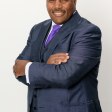Diversity and Inclusion Speakers
You've got the stage, the audience, maybe even a theme.
But the right diversity and inclusion speaker? That's still a question mark.
There are a lot of voices out there, but not all of them connect with your crowd or speak from real experience.
So how do you find diversity and inclusion speakers who actually bring clarity, nuance, and energy to the room?
The kind who know how to meet people where they are and still challenge them to think differently?
That's what this page helps you sort out. You'll get a curated list of standout diversity and inclusion speakers who've spoken at top events, led meaningful conversations, and brought fresh thinking to both small teams and global stages.
I've seen how the right speaker can shift a room's energy and get people leaning in, not tuning out. Whether you're planning a summit, a panel, or an intimate podcast, you're in the right place.
Take a look, explore the diversity and inclusion speakers featured here, and reach out when you're ready to book someone truly worth hearing.
Top Diversity and Inclusion Speakers List for 2025
Sharon Love
Inspire, empower, and thrive—unlock your speaking superpowers
Rikki Arundel
Award winning Keynote and virtual Speaker, Speaking/TEDx/Storytelling Coach and Gender and LGBTQ Inclusion expert.
Joan Michelson
Harnessing the power of sustainable innovation
Lyman Montgomery
Bridging faith, culture, and leadership — one real conversation at a time.
Cathy Holt
Empowering women to lead boldly and transform communities
Dr. Steve Yacovelli
Empowering all leaders to create a more welcoming and inclusive workplace
Irma Goosen
Empowering Change Through Immigrant Stories - Championing Leadership & Innovation
Maritza Perez
Unleash Your Potential: Guiding Entrepreneurs to Success with Strategic Vision, Heart, and a Visibility Accelerator Approach.
Jim Kukral
Turning Trauma into Growth - Leading Intentionally in a Post-Pandemic World.
Bobbie Carlton
Empowering women, igniting change, one stage at a time!
What Makes a Great Diversity and Inclusion Speaker
Take someone like Vernā Myers, who doesn't just talk about inclusion-she lives it. A great diversity and inclusion speaker doesn't rely on buzzwords or surface-level platitudes. They dive into the uncomfortable, the nuanced, the systemic. They tell stories that stick with you. Stories of boardrooms that changed because someone finally spoke up. Of classrooms where a student saw themselves represented for the first time. Of policies rewritten because someone dared to challenge the status quo.
But it's not all heavy. A great speaker knows how to balance gravity with hope. They use humor without mocking. They challenge without alienating. They inspire action, not just applause. And they tailor their message to the audience-whether it's a startup in Nairobi, a university in Toronto, or a Fortune 500 in Sydney.
What sets them apart is their ability to make people feel seen. Not just represented, but truly understood. That's what makes their message stick. That's what drives change.
So if you're looking for someone to just tick a box, keep scrolling. But if you want someone who can shift perspectives and spark real conversations, that's the kind of diversity and inclusion speaker you want on your stage.
How to Select the Best Diversity and Inclusion Speaker for Your Show
1. Define Your Goals.
- Are you trying to educate, inspire, challenge, or all of the above?
- For example, if your audience is a group of HR professionals, you might want someone who can speak to inclusive hiring practices. If it's a tech summit, look for someone who can address algorithmic bias or representation in STEM.
2. Know Your Audience.
- Consider their level of awareness and openness to DEI topics.
- A corporate board might need a different tone than a student-led conference.
- Ask yourself: Will they respond better to data-driven insights or personal storytelling?
3. Use Platforms Like Talks.co.
- Talks.co makes it easy to browse speaker profiles, watch sample talks, and read reviews.
- You can filter by topic, region, industry, and even speaking style.
- Bonus: The platform connects hosts and guests directly, cutting out the middleman.
4. Review Their Content.
- Watch full-length talks, not just highlight reels.
- Check their social media, blog posts, or interviews to see how they engage with current issues.
- Look for consistency and credibility.
5. Ask the Right Questions.
- What's their approach to intersectionality?
- How do they handle pushback or tough questions?
- Can they customize their message for your specific audience?
Selecting the best speaker isn't about playing it safe. It's about choosing someone who can meet your audience where they are-and move them forward.
How to Book a Diversity and Inclusion Speaker
1. Start with a Clear Brief.
- Outline your event goals, audience demographics, preferred format (keynote, panel, workshop), and budget.
- Include your event date, location (or virtual platform), and any specific themes or outcomes you're aiming for.
2. Browse and Shortlist.
- Use speaker directories like Talks.co to find vetted diversity and inclusion speakers.
- Look for profiles with video samples, testimonials, and topic breakdowns.
- Shortlist 3-5 candidates who align with your goals.
3. Reach Out Directly.
- On platforms like Talks.co, you can message speakers or their teams directly.
- Be clear in your outreach: mention why you're interested in them, what your event is about, and what you're hoping they can deliver.
4. Set Up a Discovery Call.
- This is your chance to align expectations, discuss customization, and gauge chemistry.
- Ask about their tech setup if virtual, travel needs if in-person, and how they handle Q&A or audience interaction.
5. Confirm and Contract.
- Once you've chosen your speaker, send a formal agreement outlining deliverables, fees, deadlines, and cancellation terms.
- Don't forget to include promotional responsibilities if applicable (e.g., social media mentions, pre-event interviews).
6. Prep and Promote.
- Share event materials with the speaker early: agenda, audience info, branding guidelines.
- Promote their appearance on your channels to build anticipation.
7. Follow Up Post-Event.
- Send a thank-you note, share feedback, and ask for a testimonial if the experience was great.
- Consider rebooking them for future events or recommending them to others.
Booking a speaker is more than a transaction-it's a partnership. Treat it that way, and you'll get way more than just a good talk.
Common Questions on Diversity and Inclusion Speakers
What is a diversity and inclusion speaker
Unlike general motivational speakers, diversity and inclusion speakers focus specifically on issues like racial equity, gender identity, disability inclusion, neurodiversity, LGBTQ+ rights, and cultural competence. They might speak at conferences, corporate retreats, universities, or virtual summits. Some specialize in specific sectors, like healthcare or tech, while others address broader societal patterns.
Their role isn't just to inform-it's to provoke thought and action. They often use personal stories, research, and real-world case studies to help audiences understand systemic barriers and how to dismantle them. For instance, a speaker might explain how unconscious bias affects hiring decisions, or how inclusive design benefits both users and businesses.
Many diversity and inclusion speakers also consult or train organizations beyond the stage. They help teams build inclusive cultures, assess policies, and implement change. But their speaking engagements are often the catalyst-sparking conversations that lead to deeper transformation.
In short, a diversity and inclusion speaker is someone who uses the power of language and presence to shift mindsets and open doors. They're not just talking-they're building bridges.
Why is a diversity and inclusion speaker important
First, they bring in outside expertise. Internal DEI teams can do a lot, but sometimes you need an external voice to shake things up. A speaker can say what insiders can't. They can introduce new frameworks, global perspectives, or hard truths that resonate differently coming from a guest.
Second, they help normalize uncomfortable conversations. Whether it's about racial bias, gender equity, or accessibility, these topics can be tough to navigate. A skilled speaker creates a safe space for dialogue. They model vulnerability and curiosity, which encourages others to do the same.
Third, they catalyze action. A great talk doesn't just end with applause-it ends with people asking, 'What can I do next?' Whether it's a CEO rethinking hiring practices or a student starting a new campus group, speakers often spark tangible change.
And finally, they bring representation to the forefront. Seeing someone who reflects your identity or advocates for your experience on stage can be incredibly validating. It tells people, 'You belong here.'
So if you're serious about inclusion, don't just rely on internal memos or training modules. Bring in a speaker who can challenge, inspire, and move your audience forward.
What do diversity and inclusion speakers do
1. Educate Audiences.
- They explain complex topics like systemic racism, unconscious bias, intersectionality, and inclusive leadership in ways that are accessible and engaging.
- For example, a speaker might use real-world data to show how gender bias affects promotion rates in finance, or how cultural norms impact communication styles in global teams.
2. Share Personal and Collective Stories.
- Storytelling is a powerful tool. Speakers often share their own experiences or amplify voices from marginalized communities to humanize abstract issues.
- These narratives help audiences connect emotionally and understand the stakes.
3. Facilitate Dialogue.
- Many speakers lead Q&A sessions, workshops, or panels where they guide participants through tough conversations.
- They create space for reflection, disagreement, and learning-without shame or blame.
4. Offer Practical Tools.
- It's not just about awareness. They provide actionable strategies, frameworks, and resources that individuals and organizations can implement.
- Think inclusive hiring checklists, bias interrupters, or equity audits.
5. Customize Content for Different Contexts.
- A talk for a rural school district in the Midwest will look very different from one for a global tech company in Singapore.
- Great speakers adapt their message to the audience's needs, culture, and readiness.
In essence, diversity and inclusion speakers are educators, facilitators, and change agents. They don't just talk about inclusion-they help make it real.
How to become a diversity and inclusion speaker
1. Define Your Niche and Message
- Diversity and inclusion is a broad field. Are you focused on race and equity in the workplace? LGBTQ+ advocacy in education? Disability inclusion in tech?
- Pick a lane that aligns with your experience, passion, and the needs of your audience.
- Tip: Look at what top speakers are doing, but don't copy. Find your unique voice.
2. Build Your Credibility
- Start by writing articles, publishing LinkedIn posts, or hosting webinars.
- Volunteer to speak at local events, schools, or online summits.
- Collect testimonials and feedback to use as social proof.
3. Create a Speaker Page
- Use platforms like Talks.co to build a professional speaker profile.
- Include your bio, topics you speak on, a high-quality headshot, and a video reel.
- Make it easy for event organizers to reach out and book you.
4. Network with Hosts and Other Speakers
- Join speaker communities or attend virtual summits to connect with event hosts.
- Use Talks.co to pitch yourself to podcast hosts or summit organizers.
- Tip: Don't just pitch. Offer value. Suggest a topic that fits their audience.
5. Practice and Polish Your Delivery
- Rehearse your talks. Record yourself and watch it back.
- Get feedback from peers or mentors.
- Consider joining Toastmasters or hiring a speaking coach.
6. Start Small, Then Scale
- Begin with free or low-fee gigs to build experience.
- As demand grows, increase your rates and expand to corporate clients or international events.
Remember, this is a long game. Consistency, clarity, and community will get you there.
What do you need to be a diversity and inclusion speaker
1. Subject Matter Expertise
You don't need a PhD to speak on diversity and inclusion, but you do need to understand the frameworks, terminology, and evolving conversations. This includes:
- Understanding systemic bias, intersectionality, and equity.
- Staying current on global and regional D&I trends.
- Being able to cite research or case studies from reputable sources.
2. Lived Experience or Professional Insight
Authenticity matters. Whether you've led DEI initiatives in a Fortune 500 company or navigated bias as a startup founder, your story adds depth. But it's not just about your story-it's about how it connects to others.
3. Communication Skills
You'll need to:
- Speak with clarity and confidence.
- Adjust your message for different audiences (corporate, nonprofit, education, etc).
- Handle Q&A sessions with sensitivity and authority.
4. A Platform to Showcase Your Work
This is where tools like Talks.co come in. You can:
- Build a speaker page to showcase your topics, videos, and testimonials.
- Connect with hosts looking for speakers in your niche.
- Track your bookings and manage your speaking calendar.
5. A Clear Offer
What exactly do you speak about? Create 2-3 signature talks with clear outcomes. For example:
- "Unconscious Bias in Remote Teams: How to Build Inclusive Culture Online."
- "From Allyship to Action: A Roadmap for Inclusive Leadership."
In short, you need a mix of knowledge, authenticity, and strategy. The more you invest in building your voice and visibility, the more impactful your speaking career will be.
Do diversity and inclusion speakers get paid
Market Demand
With companies and organizations increasingly prioritizing DEI (Diversity, Equity, and Inclusion), the demand for speakers in this space has grown significantly. Especially after 2020, many organizations have allocated budgets specifically for DEI training and events.
Experience and Reputation
- New speakers may start with unpaid or low-paid gigs to build credibility.
- Mid-level speakers with a few years of experience and a solid portfolio can earn $1,000 to $5,000 per talk.
- High-profile speakers-those with books, TEDx talks, or media appearances-can command $10,000 to $50,000+ per keynote.
Event Type and Audience
- Corporate keynotes tend to pay the most.
- Nonprofits or educational institutions may offer lower fees but higher visibility.
- Virtual events often pay less than in-person ones, though this is changing.
Pros of Paid Speaking
- Recognition of your expertise.
- Financial sustainability.
- Motivation to continue investing in your craft.
Cons or Barriers
- Some organizations still expect DEI speakers to speak for free, especially if they are from marginalized communities.
- Budget constraints in smaller organizations.
In summary, yes-diversity and inclusion speakers do get paid, and increasingly so. But your ability to earn depends on your positioning, audience, and how you package your value.
How do diversity and inclusion speakers make money
1. Paid Speaking Engagements
- Keynotes at conferences, corporate events, and summits.
- Panel moderation or participation.
- Workshops and training sessions.
2. Consulting Services
Many speakers also offer DEI consulting. This might include:
- Auditing company policies and culture.
- Developing inclusive hiring practices.
- Facilitating employee resource groups (ERGs).
3. Online Courses and Webinars
- Platforms like Teachable or Kajabi allow speakers to package their knowledge into scalable digital products.
- Some use Talks.co to connect with hosts for paid virtual sessions.
4. Books and Publications
- Publishing a book can boost credibility and open doors to higher-paying gigs.
- Self-publishing or traditional publishing both work, depending on your goals.
5. Affiliate Partnerships and Sponsorships
- Partnering with DEI tech tools, HR platforms, or educational services.
- Sponsored content or branded webinars.
6. Membership Communities or Retainers
- Some speakers build paid communities for ongoing learning.
- Others work on retainer with companies for long-term DEI strategy.
Comparison Table:
| Revenue Stream | Scalability | Typical Income Range |
|---|---|---|
| Keynote Speaking | Low | $1,000 - $50,000 per talk |
| Consulting | Medium | $5,000 - $100,000+ annually |
| Online Courses | High | $500 - $50,000+ per launch |
| Book Sales | Medium | $1,000 - $100,000+ |
| Sponsorships | Medium | Varies widely |
| Retainers | Medium | $2,000 - $10,000/month |
How much do diversity and inclusion speakers make
Entry-Level Speakers
- Typically earn $500 to $2,000 per talk.
- Often speak at community events, schools, or small nonprofits.
- May supplement income with part-time consulting or day jobs.
Mid-Tier Speakers
- Earn between $2,000 and $10,000 per engagement.
- Often have a strong online presence, a speaker page on platforms like Talks.co, and a few media features or published work.
- May speak at regional conferences or mid-sized companies.
Top-Tier Speakers
- Can command $10,000 to $50,000+ per keynote.
- Often have bestselling books, TEDx talks, or national media appearances.
- Work with Fortune 500 companies, global summits, or government agencies.
Annual Income Estimates
| Speaker Level | Talks per Year | Estimated Annual Income |
|---|---|---|
| Entry-Level | 10-20 | $5,000 - $40,000 |
| Mid-Tier | 20-40 | $40,000 - $200,000 |
| Top-Tier | 30-50+ | $200,000 - $1M+ |
- Geographic region (US and UK markets tend to pay more than others).
- Industry (tech and finance pay more than education or nonprofits).
- Format (in-person events often pay more than virtual, though this is shifting).
So while there's no one-size-fits-all answer, the potential for a lucrative career is real-especially if you build a brand and diversify your income streams.
How much do diversity and inclusion speakers cost
Typical Price Ranges
| Speaker Level | Virtual Event Fee | In-Person Event Fee |
|---|---|---|
| Emerging Speaker | $500 - $2,000 | $1,000 - $3,000 |
| Mid-Level Speaker | $2,000 - $5,000 | $3,000 - $10,000 |
| Top-Tier Speaker | $5,000 - $20,000+ | $10,000 - $50,000+ |
- Event Type: Corporate events usually pay more than nonprofit or educational ones.
- Duration: A 60-minute keynote costs less than a half-day workshop.
- Customization: Tailored content or pre-event consulting adds to the fee.
- Travel: For in-person events, travel and accommodation are often extra.
Hidden Costs to Consider
- AV requirements (especially for hybrid events).
- Licensing fees if the talk is recorded and distributed.
- Post-event Q&A or follow-up sessions.
Tips for Booking Within Budget
- Use platforms like Talks.co to find speakers who match your budget and goals.
- Consider virtual events to reduce travel costs.
- Book early-many top speakers fill their calendars months in advance.
In short, hiring a diversity and inclusion speaker can cost anywhere from a few hundred to tens of thousands of dollars. But the right speaker can bring lasting value to your organization's culture and strategy.
Who are the best diversity and inclusion speakers ever
Dr. Martin Luther King Jr.: Though not a corporate speaker in the modern sense, his oratory on civil rights and justice laid the foundation for today's DEI conversations.
Audre Lorde: A powerful speaker and writer on intersectionality, feminism, and race. Her influence is still felt in academic and activist circles.
Jane Elliott: Known for her 'Blue Eyes/Brown Eyes' exercise, she's been a provocative speaker on systemic racism for decades.
bell hooks: A cultural critic and educator whose talks on race, gender, and class challenged mainstream narratives.
Nelson Mandela: His speeches on reconciliation and inclusion after apartheid remain some of the most powerful in history.
Desmond Tutu: A global voice for peace and equity, his work in South Africa and beyond made him a sought-after speaker on justice.
Angela Davis: A scholar and activist whose talks on prison reform and racial justice have shaped generations.
Malcolm X: Though controversial, his speeches on Black empowerment and systemic oppression were pivotal in shaping DEI discourse.
Sojourner Truth: One of the earliest public speakers on race and gender equality in the United States.
Who are the best diversity and inclusion speakers in the world
Dr. Robin DiAngelo: Author of 'White Fragility', she's a sought-after speaker on whiteness and racial dynamics in corporate settings.
Ijeoma Oluo: Author of 'So You Want to Talk About Race', her talks blend personal narrative with actionable insights.
Reni Eddo-Lodge: UK-based speaker and author of 'Why I'm No Longer Talking to White People About Race'.
Laverne Cox: Emmy-nominated actress and advocate for trans rights, she speaks globally on gender identity and inclusion.
Brené Brown: While not exclusively a DEI speaker, her work on vulnerability and leadership intersects deeply with inclusion themes.
Dr. Derald Wing Sue: A psychologist known for his work on microaggressions and multicultural counseling.
Janet Stovall: A TED speaker and corporate DEI strategist who focuses on measurable outcomes in inclusion work.
Minda Harts: Author of 'The Memo', she speaks on equity for women of color in the workplace.
Yassmin Abdel-Magied: A Sudanese-Australian speaker on race, gender, and faith, known for her bold and global perspective.
Common myths about diversity and inclusion speakers
It's a common misconception that D&I speakers focus solely on race or gender issues. In reality, their work spans a wide spectrum: neurodiversity, age inclusion, socioeconomic background, LGBTQ+ rights, accessibility, and more. For example, speakers like Dr. Vivienne Ming address AI bias and neurodiversity in tech, while others like Haben Girma focus on disability inclusion in education and business. The scope is broad because inclusion touches every part of society.
Myth #2: You need to be part of a marginalized group to be a D&I speaker.
While lived experience can add depth, it's not a prerequisite. Many effective speakers are allies who use their platforms to amplify underrepresented voices. Take Verna Myers, for instance. Her TED Talk on bias has reached millions, and she often speaks about allyship and systemic change from a legal and corporate lens. What matters most is authenticity, research, and a commitment to equity.
Myth #3: D&I speakers are too 'political' for corporate events.
Some organizers worry that D&I topics might stir controversy. But here's the thing: avoiding these conversations doesn't make the issues go away. In fact, companies like Salesforce and Accenture regularly bring in D&I speakers to drive innovation and employee engagement. When framed around business outcomes and human connection, these talks often lead to deeper trust and better team performance.
Myth #4: D&I speakers just share personal stories without offering solutions.
Sure, storytelling is powerful. But most top-tier D&I speakers also bring frameworks, data, and actionable strategies. For instance, Ruchika Tulshyan combines personal narrative with research-backed tools for inclusive leadership. The best speakers don't just inspire - they equip audiences to take meaningful steps.
Myth #5: D&I speaking is a trend that will fade.
This one's persistent. But the demand for inclusive workplaces, equitable policies, and diverse representation isn't going anywhere. As global demographics shift and younger generations enter the workforce, the need for D&I expertise is only growing. Speaking on these topics isn't a passing fad - it's a long-term career path with real impact.
Case studies of successful diversity and inclusion speakers
In South Africa, Buhle Dlamini leveraged his background in leadership development to become a leading voice on cultural intelligence. His talks blend African proverbs, global business insights, and practical tools for cross-cultural collaboration. What sets Buhle apart is his ability to connect with both grassroots audiences and Fortune 500 executives. His story shows how regional experience can translate into global relevance.
Then there's Michelle Kim, who founded Awaken to bring equity-focused education to workplaces. Her speaking engagements are known for being unapologetically honest and deeply educational. Michelle doesn't shy away from hard truths, and that's exactly why her sessions resonate. She's built a brand around authenticity, backed by years of activism and organizational leadership.
In the entertainment industry, America Ferrera has emerged as a powerful D&I speaker. While many know her from television, her keynote at the 2019 MAKERS Conference showcased her depth as a speaker. She spoke candidly about representation in media, the emotional labor of advocacy, and the need for systemic change. Her transition from actress to speaker illustrates how storytelling skills can translate into powerful advocacy.
Each of these speakers took a different path, but they share a few things: clarity of message, a strong point of view, and the ability to connect across audiences. Whether they came from academia, activism, business, or the arts, they turned their unique experiences into platforms for education and transformation.
Future trends for diversity and inclusion speakers
- Data-driven storytelling is rising. Audiences are asking for more than inspiration - they want evidence. Speakers who can blend compelling stories with metrics, case studies, and ROI are gaining traction, especially in corporate and tech sectors.
- Intersectionality is becoming non-negotiable. It's no longer enough to focus on a single axis of identity. The most impactful speakers are weaving in layered perspectives - race, gender, disability, class, and more - to reflect the complexity of real-world experiences.
- Virtual-first formats are sticking around. Even as in-person events return, hybrid and virtual speaking gigs are here to stay. This opens up global opportunities but also demands new skills: camera presence, digital engagement tools, and shorter, punchier formats.
- Localized content is in demand. Global companies are realizing that a one-size-fits-all D&I message doesn't work. Speakers who can tailor their content to regional cultures, laws, and social dynamics are getting more bookings, especially in Asia, Latin America, and the Middle East.
- AI and tech ethics are entering the conversation. As bias in algorithms becomes a hot topic, D&I speakers with a background in tech or ethics are finding new audiences. Think of speakers like Safiya Noble or Timnit Gebru, who connect inclusion with digital justice.
Looking ahead, expect more collaboration between D&I speakers and other disciplines: sustainability, mental health, leadership development. The silos are breaking down, and that's opening up fresh opportunities for those who can bridge worlds and speak to multiple priorities at once.
Tools and resources for aspiring diversity and inclusion speakers
National Speakers Association (NSA). While not D&I-specific, NSA offers training, networking, and certification for professional speakers. Their resources on pricing, contracts, and audience engagement are gold for anyone looking to scale their speaking business.
The Inclusion Nudges Guidebook. Created by Tinna C. Nielsen and Lisa Kepinski, this guidebook offers practical behavioral science strategies for fostering inclusion. Great for speakers who want to go beyond theory and offer actionable tools in their talks.
SpeakerHub. A directory where you can list your profile, pitch yourself to event organizers, and find speaking gigs. Make sure your bio clearly states your D&I niche and includes links to past talks or media appearances.
LinkedIn Learning. Search for courses on inclusive leadership, unconscious bias, and public speaking. These can help you sharpen both your content and delivery. Bonus: Completing courses adds credibility to your profile.
TEDx Events Directory. TEDx events are still a powerful platform for D&I speakers. Use the directory to find upcoming events in your region. Tip: Tailor your pitch to the local context of the event - organizers love relevance.
Canva. Designing inclusive, accessible slide decks is part of the job. Canva's templates and accessibility features make it easier to create visuals that resonate with diverse audiences. Use high-contrast colors and alt text for images.
Google Scholar. Want to back your talk with solid research? This free tool helps you find peer-reviewed studies on everything from workplace bias to inclusive education. It's a great way to add depth and credibility to your message.









